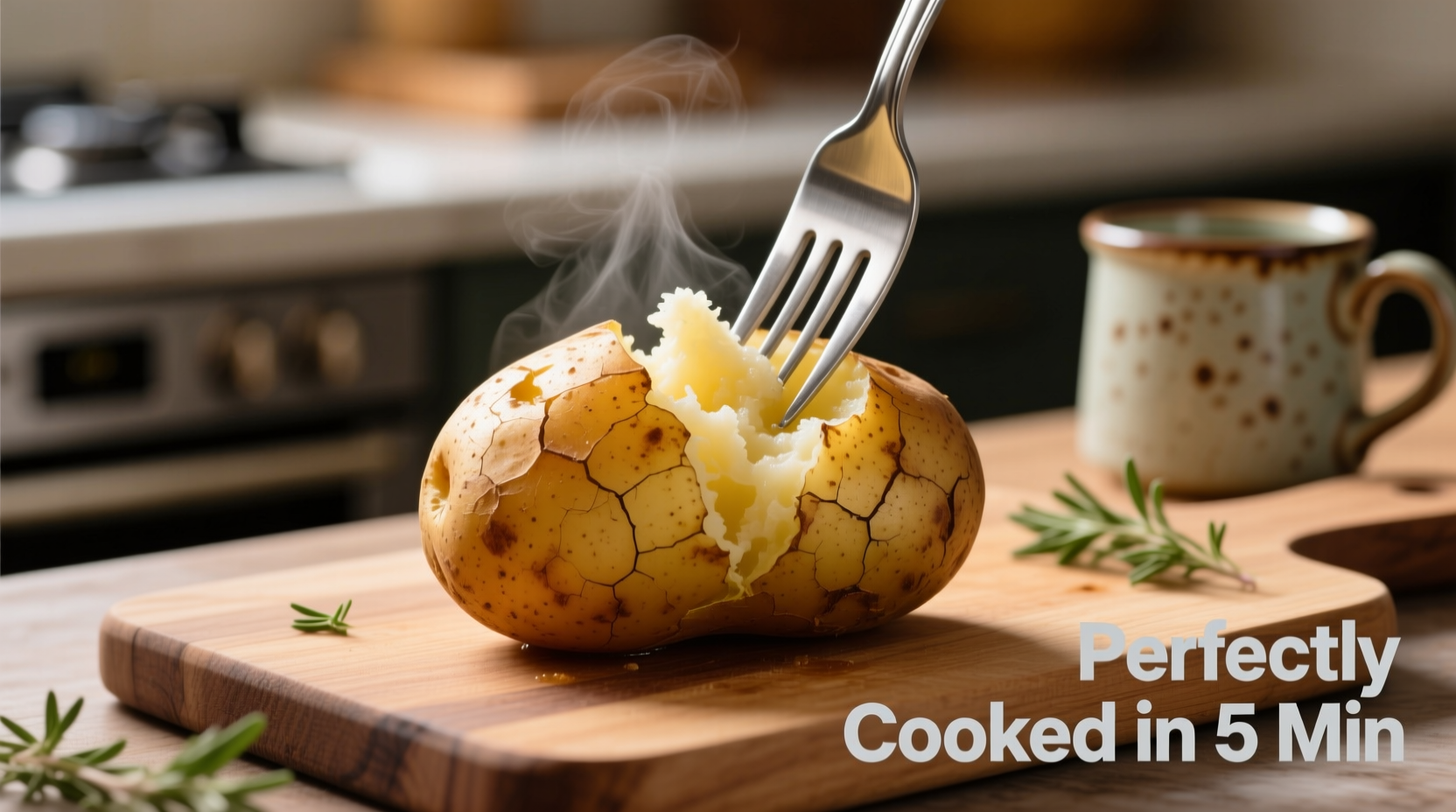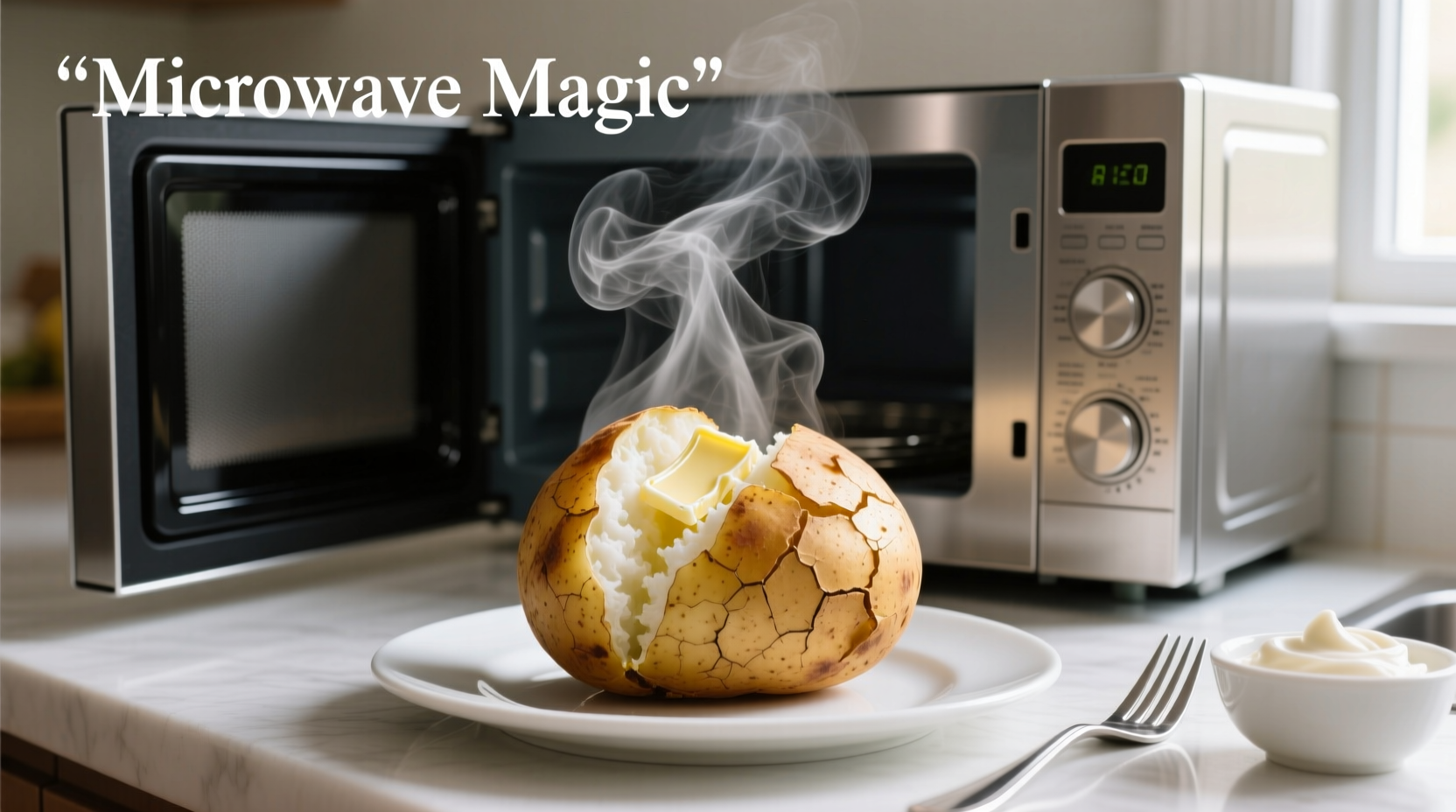Discover how to transform ordinary potatoes into perfectly cooked microwave meals in under 10 minutes. This comprehensive guide delivers science-backed techniques used by professional chefs to achieve consistently fluffy interiors and safe preparation every time—no more undercooked centers or explosive surprises.
Why Microwave Potatoes? The Science-Backed Benefits
Microwaving potatoes isn't just convenient—it's scientifically superior for preserving nutrients compared to boiling. According to USDA research, microwave cooking retains up to 30% more vitamin C than traditional boiling methods. The rapid cooking process minimizes nutrient leaching while maintaining ideal starch structure for that perfect fluffy texture.
| Potato Type | Best For | Microwave Time (Medium) | Texture Result |
|---|---|---|---|
| Russet | Baked potato style | 8-10 minutes | Fluffy interior |
| Yukon Gold | Mashed applications | 6-8 minutes | Creamy consistency |
| Red Potatoes | Salads/skins | 5-7 minutes | Firm texture |
Step-by-Step Microwave Potato Preparation
Selection: Choosing Your Potato Partners
Not all potatoes microwave equally. Russets and Yukon Golds deliver superior results due to their starch composition. Avoid waxy varieties like fingerlings for microwave cooking—they become gummy. The FDA recommends selecting firm potatoes without green spots or sprouts, which indicate solanine buildup.
Preparation: The Critical Safety Step
Always wash potatoes thoroughly under running water and pierce skins 4-6 times with a fork. This critical step prevents dangerous pressure buildup—microwaved potatoes that aren't pierced can explode due to steam pressure, according to food safety experts at the University of Minnesota Extension. Never microwave potatoes in plastic wrap; use microwave-safe paper towels instead.

Cooking: Precision Timing Techniques
Place prepared potatoes directly on the microwave turntable (not on a plate) for even cooking. For one medium potato (5-6 oz), cook on high for 5-7 minutes. Rotate halfway through cooking. Larger potatoes require additional time—add 2 minutes per extra ounce. Use an instant-read thermometer to verify internal temperature reaches 210°F (99°C), the ideal point for fully cooked, fluffy potatoes.
Resting: The Secret Professional Chefs Use
Allow potatoes to rest for 3-5 minutes after microwaving. This crucial step lets residual heat complete the cooking process while allowing starches to set properly. Cutting too soon releases steam that should be retained for optimal texture.
Context Boundaries: When Not to Microwave Potatoes
Microwave cooking excels for single servings but has limitations. For multiple potatoes, conventional oven baking produces more consistent results. The microwave method isn't suitable for dishes requiring crispy skins—those need dry-heat methods. Food scientists at Cornell University note that microwave cooking works best when you need quick, moist results rather than caramelized exteriors.
Troubleshooting Common Microwave Potato Problems
- Undercooked centers: Rotate potatoes midway and increase cooking time by 1-2 minutes
- Waterlogged texture: Avoid wrapping in plastic or placing in containers that trap moisture
- Exploded potatoes: Always pierce skins deeply with a fork before cooking
- Dry results: Cover with damp paper towel during cooking to maintain moisture
Professional Serving Techniques
Chef Antonio Rodriguez recommends cutting a slit across the top of cooked potatoes and squeezing the ends toward the center to open them naturally. For instant mashed potatoes, microwave whole then scoop out the cooked interior—this method prevents the gluey texture that occurs when boiling water penetrates the potato.
Frequently Asked Questions
How long does it take to microwave a potato?
A medium-sized potato (5-6 ounces) takes 5-7 minutes on high power. Larger potatoes require 8-10 minutes. Always rotate halfway through cooking and verify internal temperature reaches 210°F (99°C) for perfect results.
Do you need to wrap potatoes in paper towel when microwaving?
Yes, wrapping in a damp paper towel helps maintain moisture and prevents drying. Use one dry paper towel underneath to absorb excess moisture. Never use plastic wrap as it can trap dangerous steam pressure.
Can you microwave potatoes without poking holes?
No, piercing is essential for safety. Unpierced potatoes can explode due to steam pressure buildup. Always pierce 4-6 times deeply with a fork before microwaving to create steam escape routes.
What's the best potato for microwave cooking?
Russet and Yukon Gold potatoes work best. Their starch composition creates fluffy interiors when microwaved. Avoid waxy varieties like red potatoes for baking applications, though they work well for microwave potato salads.











 浙公网安备
33010002000092号
浙公网安备
33010002000092号 浙B2-20120091-4
浙B2-20120091-4